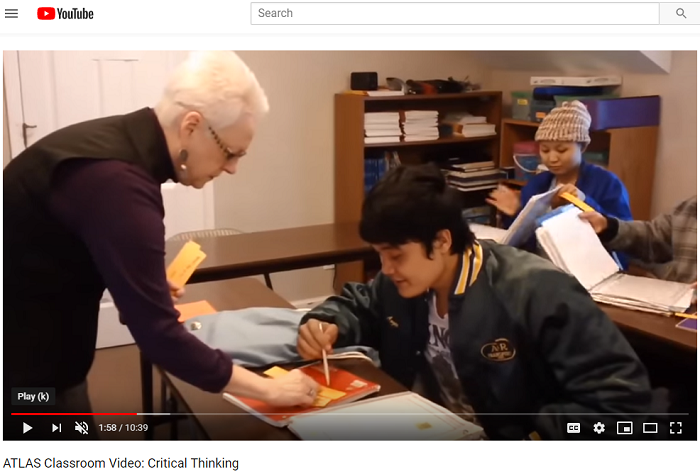- MN ABE Connect
- Archive
- ACES Video Companion Guides
 February 1, 2016
February 1, 2016
ACES Video Companion Guides
Stephanie Sommers, ACES CoordinatorWhen talking with ABE professionals, one common theme seems to be lack of time. There is never enough time to devote to lesson planning. There is never enough time to keep up on all the latest trends in the field. And there is never enough time to dedicate to professional development (PD). With all of the competing initiatives and priorities at the federal, state and local levels, it becomes very difficult to fit everything in.
The issue of PD seems to be a problem for individual teachers and for programs alike. When a staff can only get together for an hour once a month (if that), how can they possibly make time for all of the things that we in the ABE world are being told are important? While I certainly don’t have all of the answers, I would like to propose one possible way of structuring meetings so that staff can get valuable training on how to use ACES and the TIF (Transitions Integration Framework) in a relatively short amount of time.
ACES Classroom Videos and New Companion Guide
The ACES resource library on the ATLAS website is home to six different TIF-lens videos that focus on different categories of the TIF. Housed within their respective categories, there are videos for Effective Communication, Developing a Future Pathway, Self-Management, Navigating Systems, Learning Strategies, and Critical Thinking. Each of these videos is approximately 20 minutes in length and shows a teacher integrating one of these important transition skills in a classroom with adult students at varying levels.
The videos themselves are not new. What is new, however, is a video companion guide that has recently been created to help stimulate discussion, self-reflection, and a deeper understanding of these skills. The guides and videos, as well as sample lesson plans at three levels of instruction, are all available under the various TIF categories of the ACES resources library.
The video guides list the TIF skills that are associated with a particular category and then provide a structured way to take notes while watching the video. During the different stages of the lesson (warm-up, introduction, guided practice, etc.), viewers look for how that skill is being practiced through the various activities. The guide also encourages teachers to think about their own practice, and how they already teach these skills and ways that they could do more.
Here are some ideas for using the videos and companion guides in 30 minutes or less:
- 5 minutes: Choose one section of the video to watch and reflect on using the video companion guide. This could be a particular area that staff have expressed an interest in learning more about, such as structuring warm-up activities or modeling through guided practice. Each video divides the lessons into these discrete parts, and each section is clearly labeled. Spend one or two minutes reflecting as a large group. What were the biggest take-aways?
- 15 minutes: Watch one or two sections of the video, and then divide staff into small groups to discuss and debrief. The video companion guide can add structure and purpose to these conversations. Encourage staff to find an “ACES buddy” and commit to implementing one new TIF skill before the next staff meeting.
- 30 minutes: Watch the entire video. After large or small group discussion, challenge staff to write down one specific idea for implementing this TIF skill with their own students. Distribute envelopes for staff to address to themselves and have them place their implementation ideas inside. Two to three weeks after the staff meeting, mail the letters out to staff.
- Use the guide outside of a staff meeting: Watch the video on your own. Take notes and use the companion guide to help you reflect on the TIF skill and ways to give your learners more opportunities to practice it. Keep your notes and refer to them the next time your teaching license needs to be renewed and you are required to write a reflective statement of professional accomplishment and assessment of professional growth.
Newsletter Signup
Get MN ABE Connect—the official source for ABE events, activities, and resources!
Sign UpArticle Categories
- ABE Foundations/Staff Onboarding
- ACES/Transitions
- Adult Career Pathways
- Assessment
- CCR Standards
- Citizenship
- COVID-19
- Cultural Competency
- Digital Literacy/Northstar
- Disabilities
- Distance Learning/Education
- ELA
- Equity/Inclusion
- ESL
- HSE/Adult Diploma
- Listening
- Math/Numeracy
- Mental Health
- Minnesota ABE
- One-Room Schoolhouse/Multilevel
- Professional Development
- Program Management
- Reading
- Remote Instruction
- Science
- Social Studies
- Speaking/Conversation
- Support Services
- Teaching Strategies
- Technology
- Uncategorized
- Volunteers/Tutors
- Writing